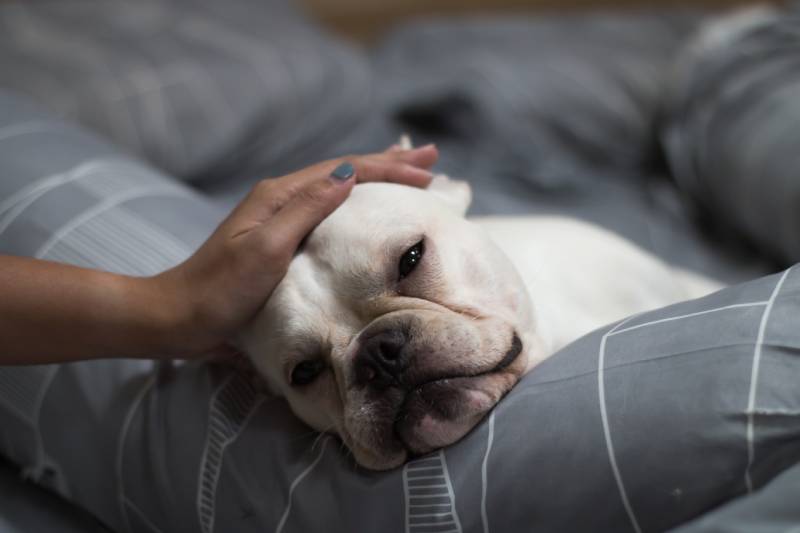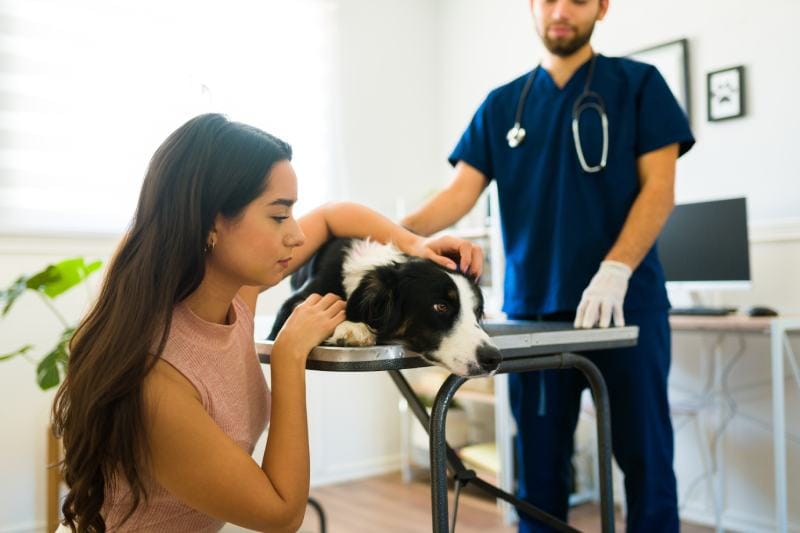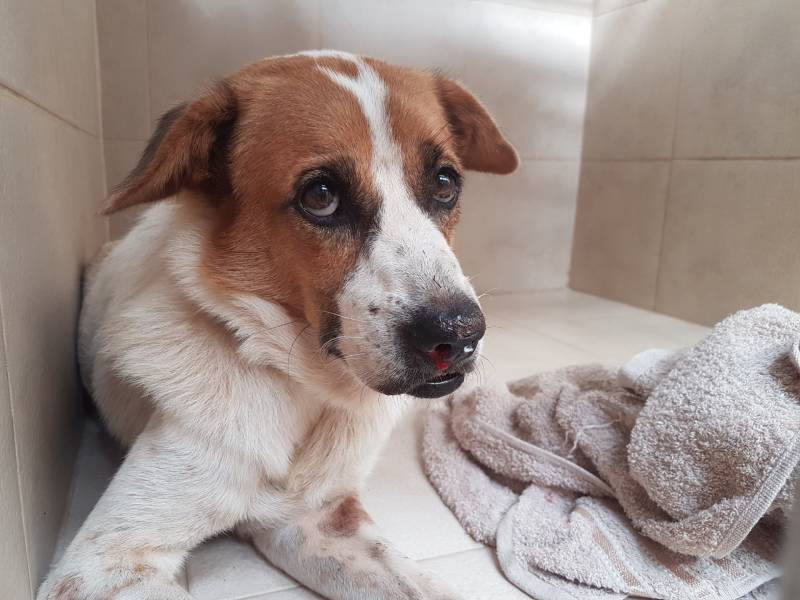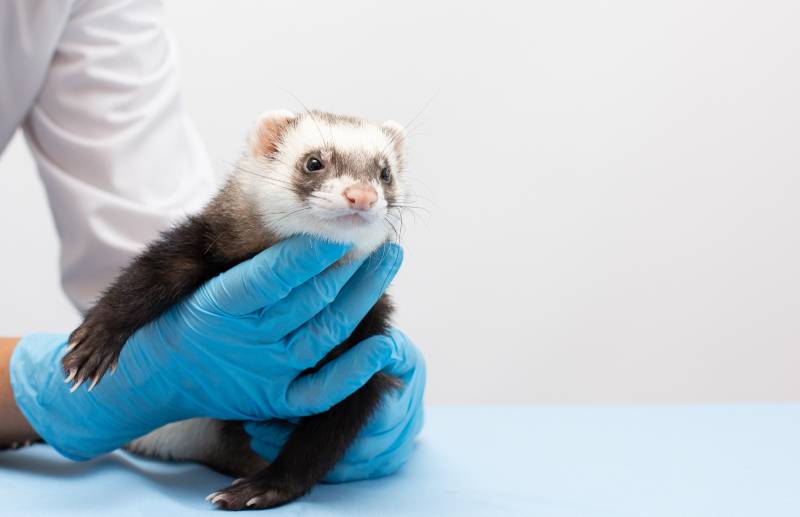What to Do When Your Dog Has a Seizure (Vet Answer)
By Dr. Kim Podlecki, DVM (Vet)
Updated on

Witnessing your dog having a seizure is one of the scariest things to go through as a pet parent. One minute your dog may be acting totally normal, and the next thing they are on the floor convulsing. While a lot of seizures will only last for a minute or less, being prepared is important. While seizures can come in many shapes and sizes, for the purpose of this article we will be referring to grand mal seizures 1. Continue reading what to do, and what not to do, if your dog has a seizure.
What to Do When Your Dog Has a Seizure
1. Don’t Panic.
This may sound simple, but staying calm will help keep both yourself and your dog safe. Freaking out, running around, trying to frantically call the vet will do you no good.

2. Move Your Dog Off the Bed or Furniture to an Open Area of the Floor
As your dog is having a seizure, they have no control over their body. During a grand mal seizure, your dog’s entire body is convulsing, they are drooling, and will often urinate and defecate on themselves. Moving your dog to a safe, open space on the floor helps prevent them from falling and/or getting caught in/on furniture and hurting themselves. If they are already on the floor, try to move any small pieces of furniture out of the way, or block any stairways so they cannot fall down. Use a large blanket to safely move your dog so that they cannot accidentally bite you or fall out of your arms.
3. Do Not Hold Your Dog
Oftentimes people want to hold their dog, trying to comfort them or coax them out of a seizure. There is nothing you can do (aside from emergency medications provided by your veterinarian) that will cause your dog’s seizure to stop. Holding your dog can be dangerous to both of you as they may bite you and/or themselves as they are unaware of their surroundings. Give your dog space, as discussed above, and make sure they hit anything or fall down the stairs.

4. Do Not Try to Pull Your Dogs’ Tongue to the Side
Contrary to popular belief, your dog cannot accidentally swallow their tongue or choke on their tongue during a seizure. Your dogs’ tongue is attached to the bottom jaw by the frenulum in addition to being attached at the back of the throat. These and other soft tissue structures make it impossible for your dogs’ tongue to fold back into the mouth and/or back of the throat, causing them to choke. Putting your hand into your dogs’ mouth will only put you at risk of getting bit, badly.
5. Do Not Force Anything into Your Dog’s Mouth
There are many old wives’ tales about how to treat seizures, such as milk, certain oils, and other foods. None of these are true. The only thing that can stop a seizure is either the body naturally stopping the process, or emergency anti-convulsants. These medications can only be administered by injection or into the rectum. Forcing anything into your dog’s mouth during a seizure, even oral medications, may cause them to choke and/or aspirate.

6. Try to Time the Seizure
Try to remember to look at your watch, phone, or clock when the seizure starts and stops. This will help you to track any progression of the seizures and accurately report back to your veterinarian the severity of the seizures. Also, mark down when the seizure occurred and how long it was on a calendar.
7. Call Your Veterinarian
If your dog only has one seizure and recovers well, your veterinarian may not need to see your dog on an emergency basis. They may make an appointment for your dog to evaluate it and likely run some bloodwork. However, if your dog has had multiple seizures in a row, is having a seizure that will not stop, or is not acting themselves, then they should be taken to the nearest emergency or urgent care veterinary clinic.

Conclusion
While witnessing your dog have a seizure can be scary, staying calm and keeping them safe should be your first priority. Never try to hold them or be near their face during a seizure, and never try to force food or water down their throat. Always try to record when and how long the seizure occurred and call your veterinarian when the seizure has stopped to discuss when your dog should be seen for evaluation.
Featured Image Credit: Leka Sergeeva, Shutterstock













